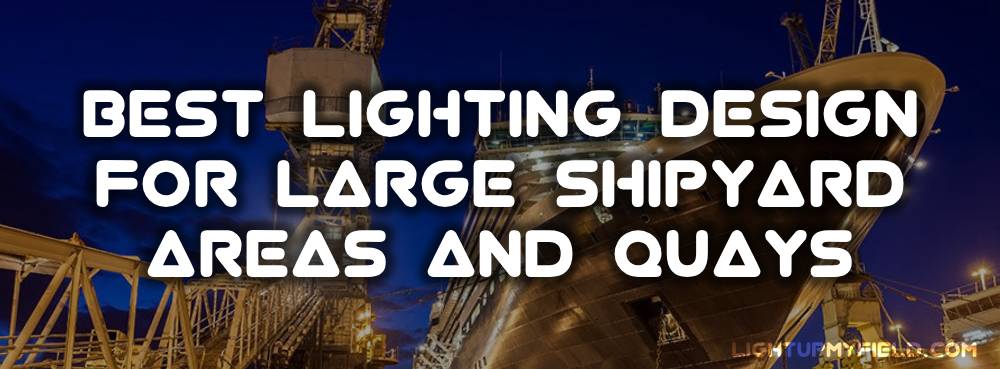When you’ve got massive open areas, heavy machinery, moving vehicles, and workers pulling long shifts, the wrong lighting setup can slow everything down—or worse, cause accidents. The goal is to create an environment where everyone can see clearly, work efficiently, and stay safe without wasting energy or blowing up your budget.
So, what goes into the best lighting design for large shipyards? Let’s break it down.
Table of Contents
ToggleWhy Lighting Design in Shipyards Matters
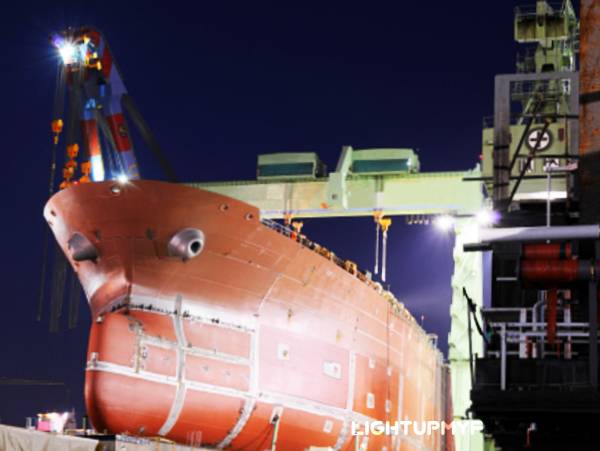 Shipyards aren’t your typical indoor workplaces like warehouses or factories. They’re huge open spaces, often exposed to all kinds of weather—rain, fog, salty sea air, and sometimes blaring sunlight. Plus, the surfaces in a shipyard aren’t your usual dull floors. You’ve got shiny steel plates, wet patches, puddles, and tons of reflective materials everywhere. All these factors make lighting design a whole different ballgame compared to other industrial sites.
Shipyards aren’t your typical indoor workplaces like warehouses or factories. They’re huge open spaces, often exposed to all kinds of weather—rain, fog, salty sea air, and sometimes blaring sunlight. Plus, the surfaces in a shipyard aren’t your usual dull floors. You’ve got shiny steel plates, wet patches, puddles, and tons of reflective materials everywhere. All these factors make lighting design a whole different ballgame compared to other industrial sites.
Big Space, Big Challenges
Think about it—some shipyards stretch over hundreds of thousands of square meters. That’s a lot of ground to cover with enough light so workers can see clearly, no matter where they are. You might have areas the size of several football fields to illuminate. And within those giant spaces, the kind of work happening can be wildly different. One spot might be a crane operator carefully moving a massive ship section, while a few meters away, a welder is focused on tiny, precise details inside a hull.
Lighting has to serve both these extremes. Too dim, and you risk crane operators missing their marks or welders struggling to see their seams. Too bright or uneven, and workers get glare or deep shadows, which can be just as dangerous.
Safety and Productivity Go Hand in Hand
Here’s the thing—poor lighting is linked to a surprising number of accidents in industrial environments. Studies show that inadequate visibility contributes to roughly 20% to 25% of workplace injuries, especially slips, trips, and falls. In a shipyard, where you’ve got heavy equipment, moving vehicles, and open pits or dry docks, the stakes are even higher. A moment’s poor visibility can lead to serious accidents involving costly equipment and, more importantly, human lives.
Good lighting doesn’t just keep accidents away—it actually boosts productivity. When workers can see clearly, they make fewer mistakes and work faster. It’s not uncommon for shipyards with upgraded lighting to report a 20% to 30% increase in work efficiency during night shifts or low-light conditions.
Weather and Environmental Impact
Don’t forget the weather factor. A rainy, foggy, or stormy day can reduce natural light drastically. That means your lighting system needs to be reliable and powerful enough to keep things visible, no matter what the sky’s doing. And because shipyards are close to the sea, salt corrosion and humidity can wreck traditional lighting fixtures quickly if they aren’t designed for the environment.
So, lighting equipment has to be durable and weatherproof. Without that, you’re looking at frequent replacements, higher maintenance costs, and possible dark zones creeping up where lights fail or dim prematurely.
Lighting Design Principles for Shipyards
Before diving into fixtures and wattages, it’s good to step back and think about what the lighting really needs to do. It’s not just about bright lights—it’s about getting the right brightness, consistent coverage, and making sure everything lasts through tough weather and long hours. Let’s break down what that means for different parts of a shipyard.
Recommended Lux and Foot-Candle Levels
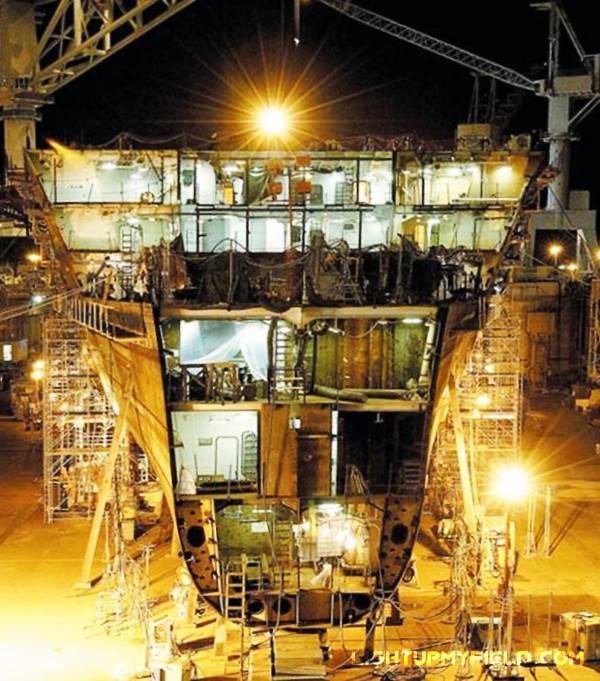 Lighting levels get measured in lux (the metric system) or foot-candles (the imperial system). Just so you have a quick reference, 1 foot-candle is about 10.76 lux. For huge open shipyard areas, here’s a solid baseline to keep in mind:
Lighting levels get measured in lux (the metric system) or foot-candles (the imperial system). Just so you have a quick reference, 1 foot-candle is about 10.76 lux. For huge open shipyard areas, here’s a solid baseline to keep in mind:
Open yard zones usually need at least 20 lux minimum (that’s roughly 2 foot-candles), but many modern shipyards actually shoot for 50 lux or more to make sure visibility is really good. You want workers to see clearly, especially when heavy equipment is moving around.
Dry dock spaces, where the heavy lifting and assembly happens, should be lit brighter — around 100 lux at the minimum. And in places where more detailed mechanical work or inspection happens, you may want to push that up to 200 lux or more.
For assembly areas or welding zones, aim for something between 200 and 300 lux, depending on how fine the work is.
When it comes to inspection or very detailed tasks, having at least 500 lux is a good target. That’s comparable to bright office lighting or even more intense, which helps workers focus on tiny details.
Emergency lighting for escape routes usually sticks around 10 lux — enough light to get out safely if the power goes out.
If you’re thinking those numbers sound high, consider that a regular office is typically around 300 to 500 lux. So for a shipyard, where safety and precision are non-negotiable, these lighting levels actually make a lot of sense.
How Many Lights Do You Actually Need?
There’s no magic number here because shipyards come in all shapes and sizes. But here’s a simple way to think about it: start with the total area and your target lux level, then calculate the total lumens needed.
Say your shipyard is 100 meters by 50 meters (that’s 5,000 square meters), and you want an average of 30 lux. Multiply those together and you get 150,000 lumens total needed to light the whole area properly.
If your LED floodlights each provide about 50,000 lumens, you’d need at least 3 fixtures to hit that target—but that’s assuming perfect coverage. Realistically, to avoid dark spots and reduce glare, you’ll probably want 4 to 6 fixtures spaced evenly across the space.
Many yards use high mast lights on poles about 25 to 35 meters tall. These help spread the light far and wide without blinding anyone on the ground.
How Many Lumens and Watts Are Enough?
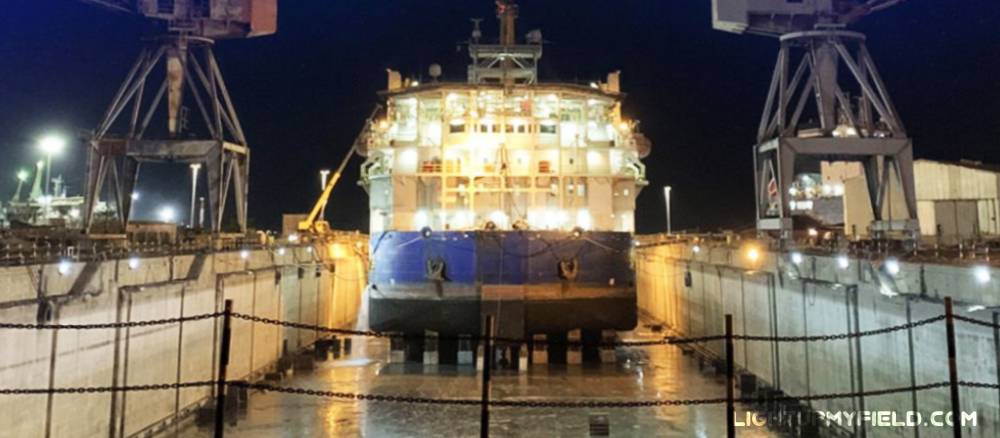
High-power LED floodlights are the way to go for big outdoor spots like shipyards. A typical 1000-watt LED fixture pumps out anywhere from 130,000 to 150,000 lumens. For most yards, you’re looking at fixtures that range from 400 watts up to 1500 watts, depending on how high your masts are and how much light you need on the ground.
The good news? LED tech is really efficient these days, averaging around 130 to 150 lumens per watt. That means switching to LEDs can slash your energy bills by 50 to 70 percent compared to older metal halide or halogen setups.
Spacing Between Lights
Getting the spacing right is key to avoiding shadows or super bright spots that cause glare. If your lights sit on masts around 25 to 35 meters tall, placing them about 3 to 4 times the height apart usually creates a nice, even spread. So, for a 30-meter mast, that’s roughly 90 to 120 meters between each light along the quay or yard edges.
That said, don’t just trust math alone—doing a photometric plan before installation can help you spot any unexpected dark corners or blinding hotspots early on.
Color Temperature: Why It Matters
Color temperature gets measured in Kelvins (K). For shipyards, cooler light tones between 4000K and 6500K are the way to go. Cooler white light makes details stand out and reduces eye fatigue over long shifts.
Warm light (like 2700K), which feels cozy and soft at home, actually makes it harder to see fine details or spot hazards in industrial environments.
Plus, daylight or cool white LEDs help workers stay alert during night shifts, which is a big plus when safety depends on sharp focus.
High Mast Lighting or Edge Arrays?
High mast lighting is popular because it covers wide open spaces without creating too many shadows. But in dry docks, where workers focus on specific areas, you might want to line the edges with lighting arrays pointed inward. This keeps light focused exactly where it’s needed without spilling into other zones.
Sometimes a combo works best—a few high masts for general coverage, plus edge-mounted fixtures for targeted lighting on specific work areas.
Key Lighting Specifications for Shipyard Design
| Parameter | Recommended Range | Units |
|---|---|---|
| Open yard lighting level | 20 – 50 | lux (2 – 5 fc) |
| Dry dock lighting level | 100 – 200 | lux |
| Assembly/welding zone lighting | 200 – 300 | lux |
| Inspection/fine detail lighting | ≥ 500 | lux |
| Emergency lighting for escape routes | ~10 | lux |
| Example shipyard size | 100 x 50 | meters |
| Total lumens needed (example) | 150,000 | lumens |
| Lumens per LED floodlight | ~50,000 | lumens |
| Number of fixtures needed (example) | 4 – 6 | fixtures |
| Typical mast height for lights | 25 – 35 | meters |
| Light spacing on mast | 3 – 4 times mast height (90 – 120) | meters |
| LED wattage range | 400 – 1500 | watts |
| LED efficiency | 130 – 150 | lumens per watt |
| Recommended color temperature | 4000 – 6500 | Kelvin (K) |
Common Mistakes When Planning Shipyard Lighting
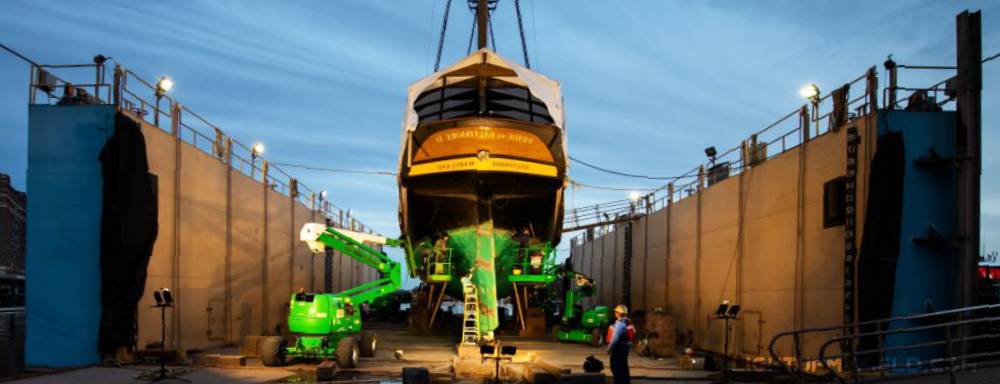
Even the biggest shipyard projects can hit snags if the lighting plan isn’t thought through well. Lighting might seem straightforward—just slap some lights up and call it a day—but that approach can lead to some real headaches down the line. Let’s talk about some of the common slip-ups to watch out for.
Underestimating Light Levels
One of the biggest mistakes is simply not providing enough light. Sometimes yards stick to the bare minimum legal requirements or guidelines, thinking it’ll be good enough. But in reality, workers might still be squinting, struggling to see details, or dealing with harsh shadows. It’s about making sure the light actually helps people do their jobs safely and efficiently—not just ticking a box on a checklist.
If you’re cutting corners on brightness, you’re basically asking for slower work, mistakes, and even accidents. Practical visibility should always take priority over bare compliance.
Overlooking Uniformity
Another big problem is poor uniformity. Picture this: one spot is blindingly bright, and right next to it, there’s a shadowy corner where you can barely see. That kind of uneven lighting creates real safety risks. Workers’ eyes have to constantly adjust, which is tiring and can cause missed hazards.
A good rule of thumb is aiming for a uniformity ratio close to 1:1.5 or better—meaning the darkest spot isn’t more than 1.5 times dimmer than the brightest. Getting uniform coverage takes planning and good photometric design, so don’t overlook this.
Sticking With Old Tech
A lot of yards still rely on old metal halide lamps because they think upgrading to LEDs is too expensive. The sticker shock of new fixtures can be intimidating, but LED retrofits actually pay for themselves faster than you might expect.
Thanks to their energy efficiency, LEDs can cut power consumption by half or more, and maintenance costs drop too because LEDs last way longer. Most yards see a return on investment in about 2 to 3 years. Plus, you get better light quality and faster startup times.
Neglecting Maintenance Access
Finally, it’s easy to forget about the practical side of things, like how you’ll maintain the lights once they’re installed. If your fixtures are mounted in spots that need a crane or special equipment just to swap a bulb or do a repair, it’ll turn into a real headache.
Planning for easy access and considering maintenance costs upfront saves a lot of time and money later. You want fixtures that are durable but also reachable without hassle.
What to Look For When Buying Floodlights
Choosing floodlights for a shipyard isn’t just about picking the biggest wattage or brightest lumens. The environment out there is tough, and the lights need to stand up to all sorts of challenges. Here’s what you really want to keep an eye on when shopping around.
Waterproofing and Corrosion Resistance
First off, waterproofing and corrosion resistance are non-negotiable. Shipyards are constantly exposed to rain, sea spray, and lots of dust. You’ll want lights rated IP66 or higher—that means they’re sealed tight against powerful jets of water and dust. Saltwater can wreck regular metal parts pretty fast, so going for fixtures with marine-grade coatings or stainless steel brackets is a smart move. It might cost a bit more upfront, but it’ll save you from rust and replacements down the road.
Vibration Resistance
Next up, think about vibration. Shipyards are noisy, full of heavy machinery, cranes, and constant movement. If your floodlights aren’t built to handle that kind of shaking and bouncing, they can loosen, get damaged, or even fall—which is a serious safety risk. Look for lights designed with vibration-resistant mounts and tough construction to keep everything steady.
Anti-Glare Features
No one wants to be blinded or distracted by glare when they’re trying to work safely. Good floodlights often come with anti-glare designs, like shields, diffusers, or specially shaped optics that help soften the light and cut down on harsh reflections. These small design tweaks can really make a difference, reducing eye strain and making it easier for workers to focus.
Smart Controls for Energy Savings
Finally, the tech side of things is getting smarter. Consider floodlights with dimming options, motion sensors, or remote monitoring capabilities. These features let you save energy by lowering brightness during slow hours or turning lights off when no one’s around—all without compromising safety. It’s a way to keep the yard lit efficiently and keep those utility bills in check.
Bringing It All Together
Lighting a shipyard or quay the right way takes more than hanging a few bright lamps. It’s about combining the right lux levels, light distribution, color temperature, and fixture durability to create a safe and efficient space. Whether you go for high mast setups or edge arrays, planning upfront saves headaches later.
Done well, lighting can make night work feel almost like daylight. Done poorly, it can slow everything down and put people at risk. So take the time to plan, choose the right gear, and test your setup before going full-scale. Your crew—and your bottom line—will thank you for it.

